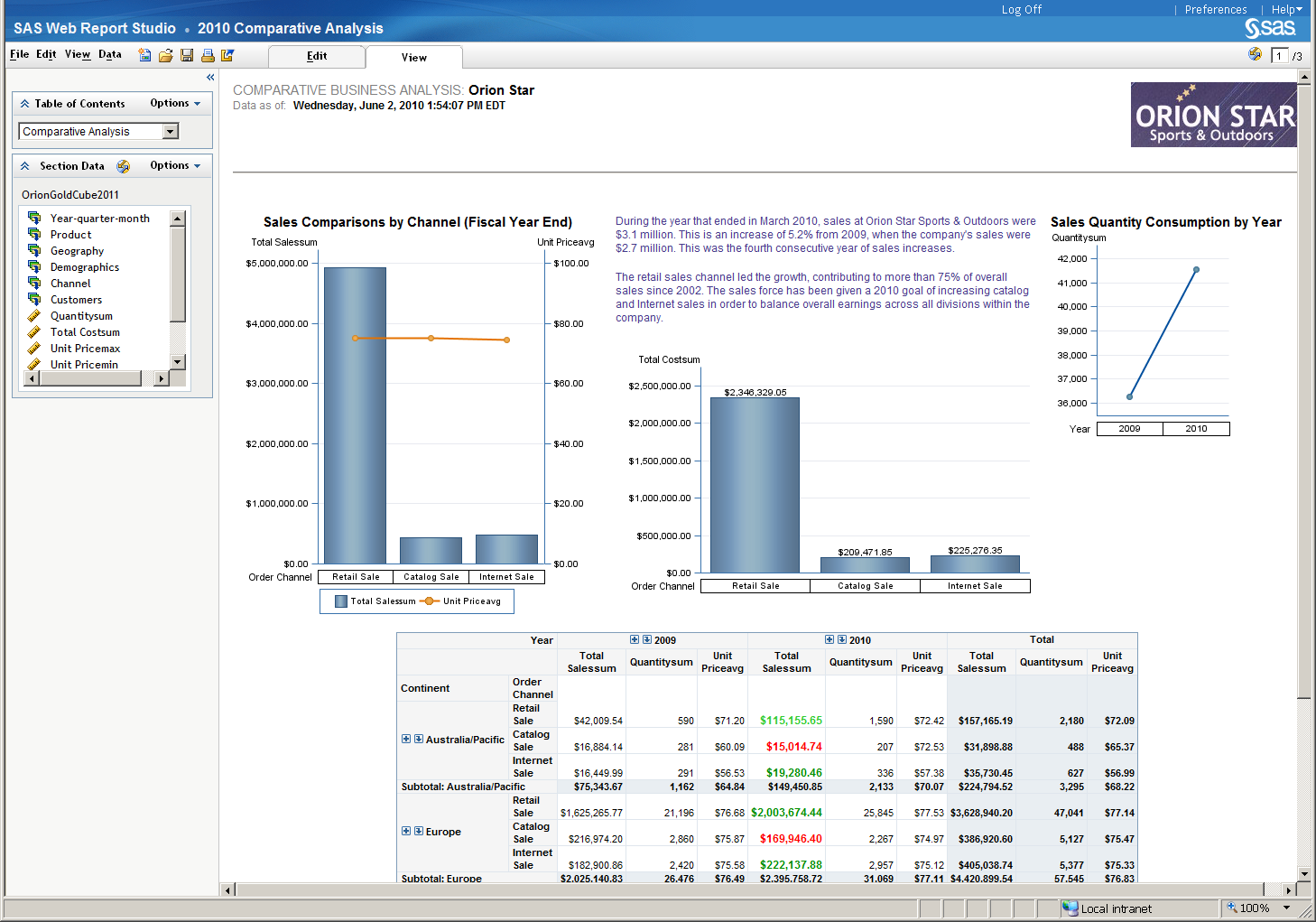Introduction to SAS Web Report Studio
Overview
SAS Web Report Studio is a Web
application that anyone can use to view, interact with, create, and
distribute public and private reports. Simply open an existing report
and interact with the information based on your current needs. For
example, you can view, reply to, or add comments to a report. Report
authors can easily point and click to query central sources of data.
Alternatively, you can add prompts and design the layout of tables,
graphs, and text using drag and drop to create a well-formatted report.
All this is accomplished by using a Web browser. You do not need to
understand a programming language. Periodic reports can be scheduled
to process unattended on a recurring basis and then distributed using
e-mail.
In addition, powerful
SAS analytical results can be used by business professionals across
an organization through their Web browsers by leveraging SAS stored
processes in SAS Web Report Studio. Stored processes are SAS programs,
created by business analysts who are proficient in SAS, that contain
instructions for calculating analytical results that are rendered
as part of a report or as a complete report. Stored processes typically
include queries, prompted filters, titles, images, and statistical
analyses to deliver predictive analytics to a large audience. SAS
Web Report Studio combines query, reporting, and analytical capabilities
in a single Web-based tool that everyone can use to meet a broad set
of information needs.
The Report Wizard enables novice users
to quickly create and distribute basic queries and reports based on
either relational or multidimensional data sources in five easy steps.
More advanced users can use additional layout and query capabilities
that are available, including the ability to define custom calculations
and complex filter combinations, multiple queries, and SAS analytical
results into a single document. A gallery of predefined layout choices
expedites the report creation process, and an extensive range of advance
report components enable users to create and interact with reports
from their Web browsers. Reports and the application can be branded
to match a corporate style.
Reports can be shared
with others or kept in private folders based on security settings.
Certain pages of reports can be distributed to authorized users via
e-mail or a subscription channel.
SAS Web Report Studio
runs within a Web application server such as JBoss, Oracle WebLogic,
or IBM WebSphere, and requires the SAS BI Reports Service Workspace.
It can be invoked from within SAS Information Delivery Portal.
SAS Web Application
Themes contain definitions for themes that are used by several SAS
Web applications including the SAS Web Report Studio. Themes enable
you to create and apply consistent, visual customization and company
branding that is applied to all theme-enabled SAS Web applications.
In SAS Web Report Studio, themes apply to the user interface, including
the dialog boxes that are used to view, create, edit, and share reports.
Requirements for SAS Web Report Studio
-
SAS BI Report Services, which includes the report output generation tool. The report output generation tool (
rptbatch.batfor Windows andrptbatch.shfor UNIX and z/OS) enables you to create pre-generated, static versions of reports from the command line. New parameters have been added to the report output generation tool.
